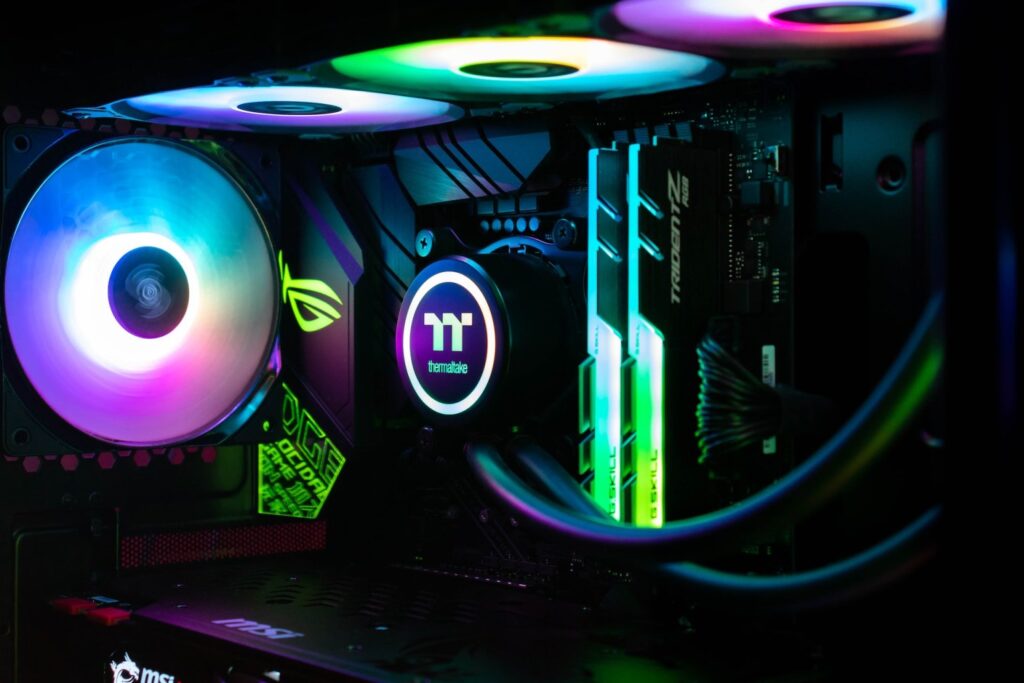How to Change Graphics Card From Intel to Nvidia?

As technology advances, it is important to keep up with the latest hardware. For those looking to upgrade their computer’s graphics capabilities, switching from an Intel graphics card to an Nvidia card is a great option. This article will provide step-by-step instructions on how to change your graphics card from Intel to Nvidia. With this guide, you can take advantage of the improved performance that an Nvidia graphics card offers while keeping your current system intact.
How to Change Graphics Card From Intel to Nvidia?
Graphics cards are an important component of a computer’s overall performance and are necessary for gaming, streaming videos, or using applications that require high-performance graphics capabilities. Upgrading from an Intel to an Nvidia graphics card is one way to give your computer the extra graphical power it needs. We will discuss how to change graphics cards from Intel to Nvidia and provide tips for optimal performance.
Step 1: Identify Your Graphics Card
The first step in changing your graphics card is to identify the current graphics card you have installed in your computer. To do this, you can open the Device Manager on your computer and look for the Display Adapters category. Under this category, you should see the name of your current graphics card.
If you are using a laptop, it may be more difficult to identify your current graphics card as it may be integrated into the motherboard. In this case, you can check the specifications of your laptop online or consult the user manual to determine the graphics card that is currently installed.
Step 2: Uninstall Intel Drivers
Once you have identified your current graphics card, you will need to uninstall the drivers for that card. This is important because having multiple graphics card drivers installed on your computer can cause conflicts and affect performance.
To uninstall the Intel drivers, you will need to go to the Programs and Features section of your computer’s Control Panel and locate the Intel drivers that are currently installed. Once you have found them, you can uninstall them by clicking on the Uninstall button.
Step 3: Install Nvidia Drivers
After you have uninstalled the Intel drivers, you can now install the drivers for your new Nvidia graphics card. You can download the latest drivers from the Nvidia website and then run the installation file. During the installation process, you may be prompted to reboot your computer. It is important to follow any instructions provided by the installer and reboot your computer if prompted to do so.
Step 4: Update BIOS Settings
After you have installed the Nvidia drivers, you will need to update the BIOS settings on your computer to ensure that your new graphics card is properly recognized.
To update your BIOS settings, you will need to enter the BIOS setup utility on your computer. The process for entering the BIOS setup utility will vary depending on your computer’s make and model, so you will need to consult your computer’s user manual or contact the manufacturer for instructions.
Once you are in the BIOS setup utility, you will need to look for the settings related to your graphics card. You may need to change the primary graphics card or set the new graphics card as the default.
Step 5: Check Performance & Troubleshoot
After you have updated the BIOS settings, you can now check the performance of your new graphics card. You can do this by running benchmarking software or playing games that are known to stress the graphics card.
If you are experiencing any issues with your new graphics card, such as poor performance or graphical glitches, you may need to troubleshoot. Some common causes of problems include outdated drivers, conflicting software, or incorrect BIOS settings.
To troubleshoot, you can try reinstalling the drivers, updating your computer’s operating system, or reverifying the BIOS settings. If the problem persists, you may need to contact the manufacturer of your graphics card for further assistance.
Step 6: Ensuring Optimal Performance
To ensure optimal performance with your new graphics card, you will need to make sure that your computer’s power supply can handle the additional power requirements of the card. You can check the power requirements of your graphics card on the manufacturer’s website and compare it to the power supply of your computer.
You should also make sure that the cooling system of your computer is adequate to keep the graphics card running at a safe temperature. This may include cleaning the dust and debris out of the computer case and replacing the thermal paste on the graphics card.
Additionally, you should also make sure that your computer’s operating system and other software are up-to-date and configured for optimal performance. This can include disabling unnecessary background processes, adjusting visual settings in games, and using performance-enhancing software or tools.
It’s also a good idea to keep an eye on the temperature of the graphics card by using a monitoring software, this will let you know if the card is running too hot and needs cooling. Finally, It’s important to keep the drivers of your graphics card updated, this will ensure that you have the latest features and bug fixes, and it can also increase the performance of the card.
Conclusion
Changing a graphics card from Intel to Nvidia is a simple process that even those with minimal technical knowledge can accomplish. Although it may take some time to install the new card and driver, it is well worth the effort for the improved graphics quality and performance. Make sure to research carefully before purchasing a new card, as some cards may not be compatible with your hardware. Once you have everything ready to go, uninstalling and installing the new card should only take about 15-20 minutes.